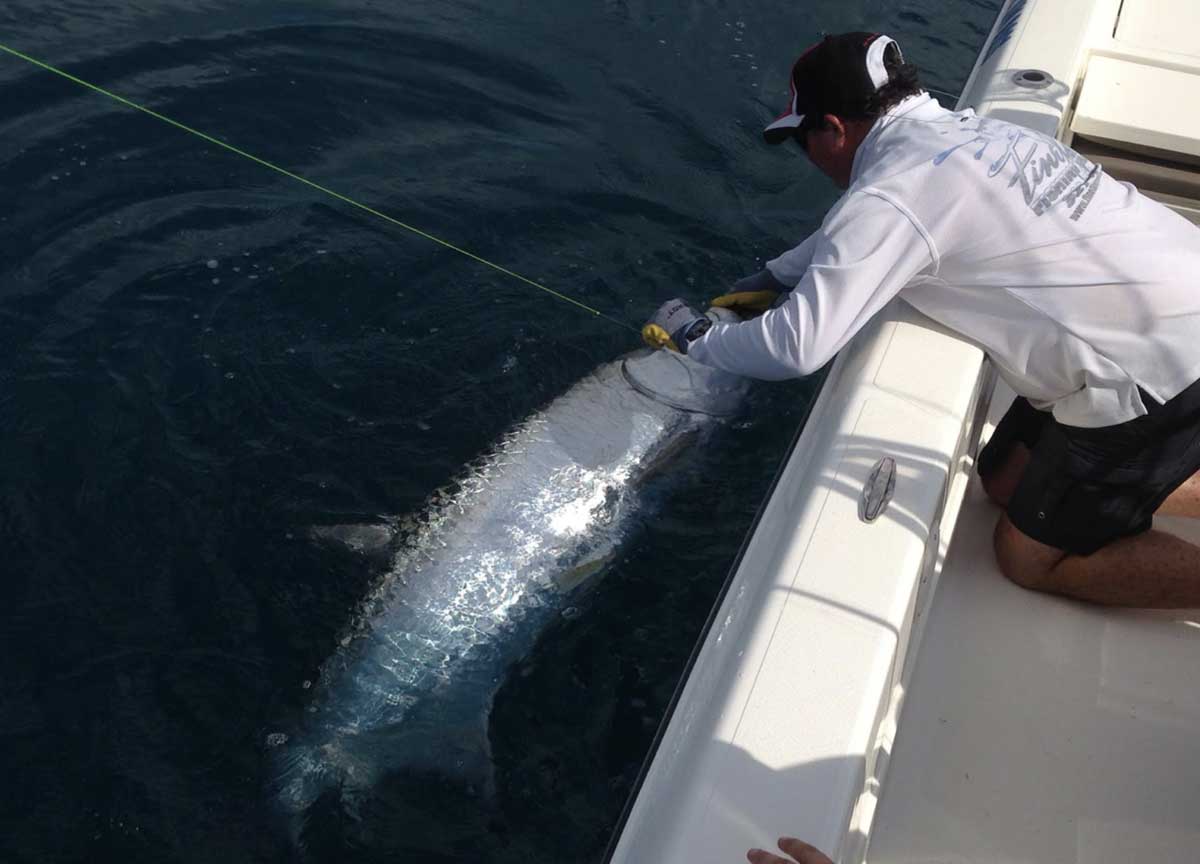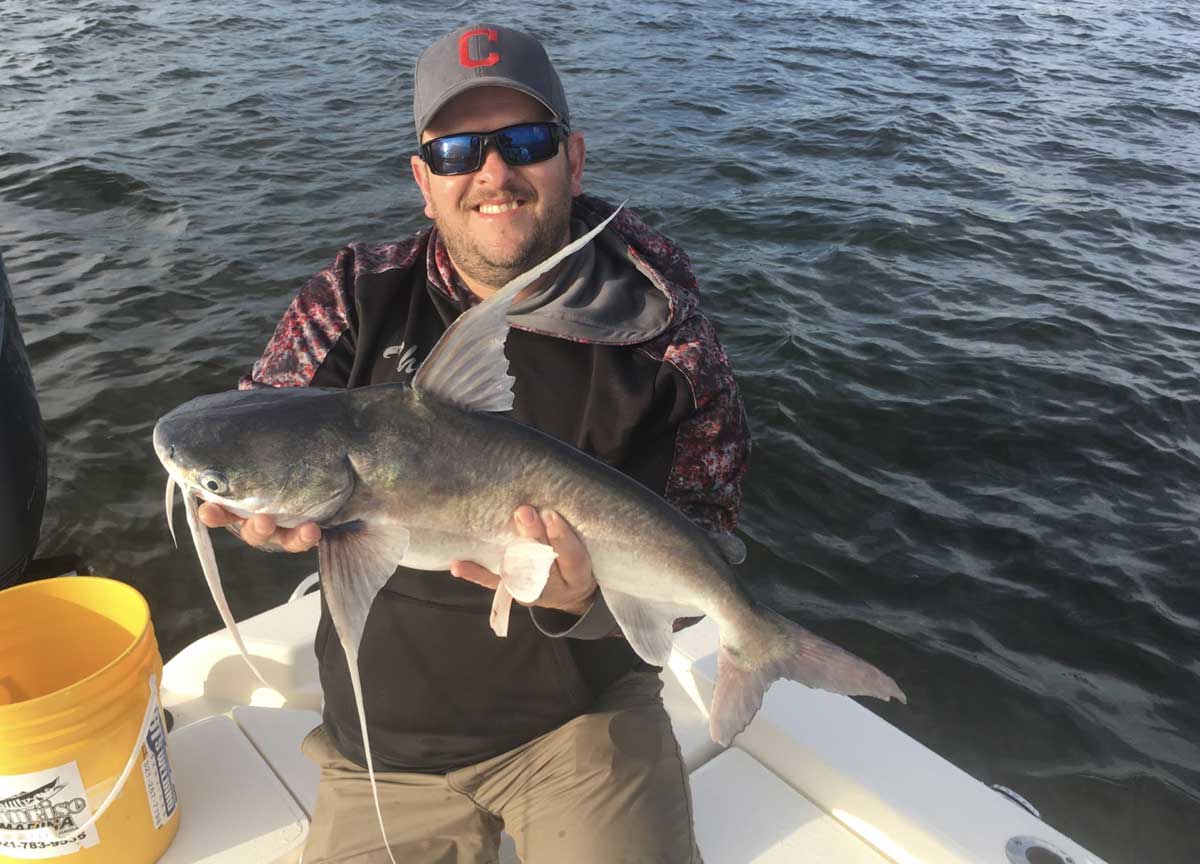
Capt. Jim with a tarpon at boat side.
It’s the middle of August and it’s “Africa” hot out there right now. Most anglers have decided to stay home in the A/C or pool and wait a few weeks for the sun to give them a reprieve. However, this is a time of year when chasing tarpon can pay dividends for those willing to put in some sweat equity.
Unfortunately, our summer rains have turned the waters of the Indian and Banana River Lagoons into something resembling a nuclear waste spill. All of the “slow release” fertilizer that was applied to residential lawns across our county earlier this spring has now been flushed into our lagoons. This fertilizer boost is what has created the explosion of neon green colored algae that you now see as you drive over our area causeways. Let’s take yet another lesson from this year’s algae event and make sure that NO ONE reading this column is part of this ongoing problem next year.
Now, back to the tarpon- they are one species that are willing to put up with us continually trying to destroy our lagoons with lawn fertilizers. These fish have the ability to temporarily endure less than ideal water conditions. The reason for this is that they can breathe in air much like us. This is why you see them “role” or “breach” the water’s surface. They are trying to get oxygen which is being depleted in our algae laden waters. When you find a school of tarpon rolling, you can target them by using live or cut baits like mullet, pinfish, pilchards, or menhaden. In many case,s you will have Gaffstop (sail) catfish eating these baits much quicker than the tarpon, but this is just something that happens when targeting tarpon in our lagoons.

Sunrise Sailcat.
The tarpon generally feed best during the first three hours of the morning and then again around the last two hours before dark in the evening time. If you prefer to use artificial lures, Storm swim baits and Saltwater Assassin soft plastic sea shad can also work on these fish at times. You can work these lures in one of two ways. The first is a steady slow to medium retrieve with no twitches. You just want the lure to swim in a straight line. Try to keep the lure swimming at about half the depth of the water you are fishing in. Tarpon usually swim in this same depth, so your lure should be right in front of their nose if you can do this. The other is to let the lure fall to the bottom, then sharply jig it upwards, then let it fall back to the bottom again. This technique usually works best in water deeper than about 5 feet. I like to use this type of retrieve when targeting tarpon in residential canals.
Our tarpon are running from about 5 to 100 pounds right now, so bring a variety of rods to handle whatever size tarpon you may run up against. As always you can find out more information about our fishing charter services at our website.
Until next week… Catch a memory!


Leave A Comment
You must be logged in to post a comment.